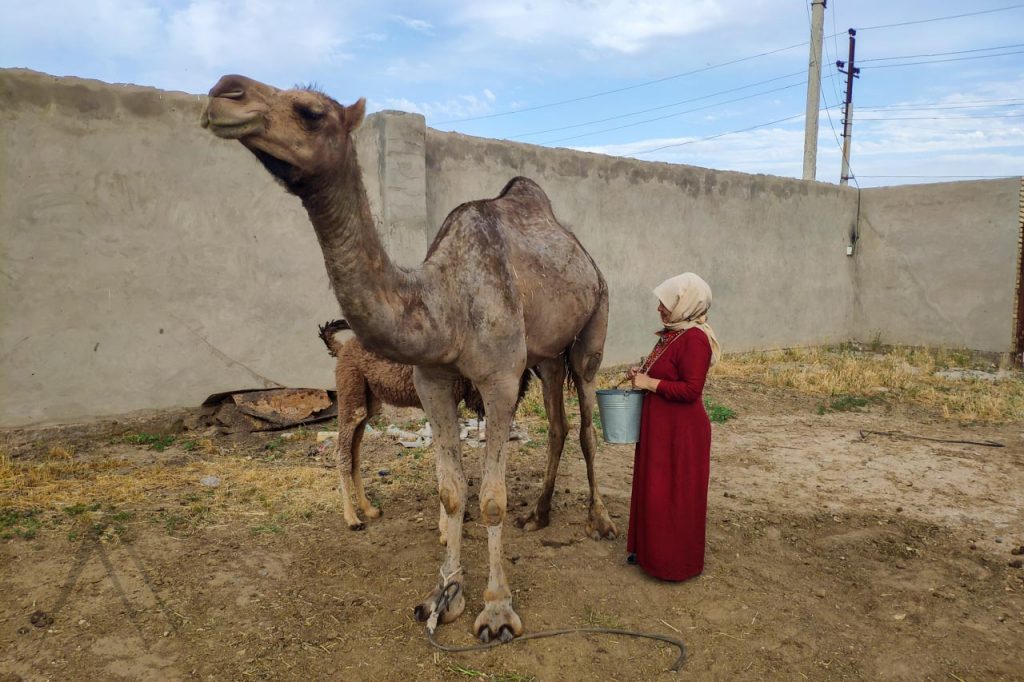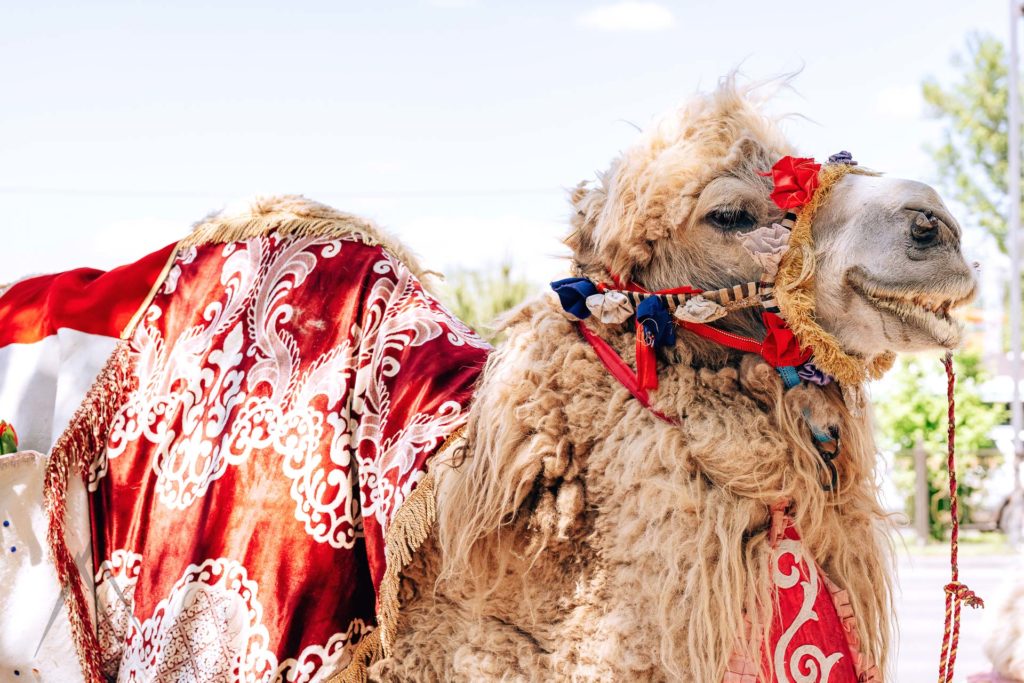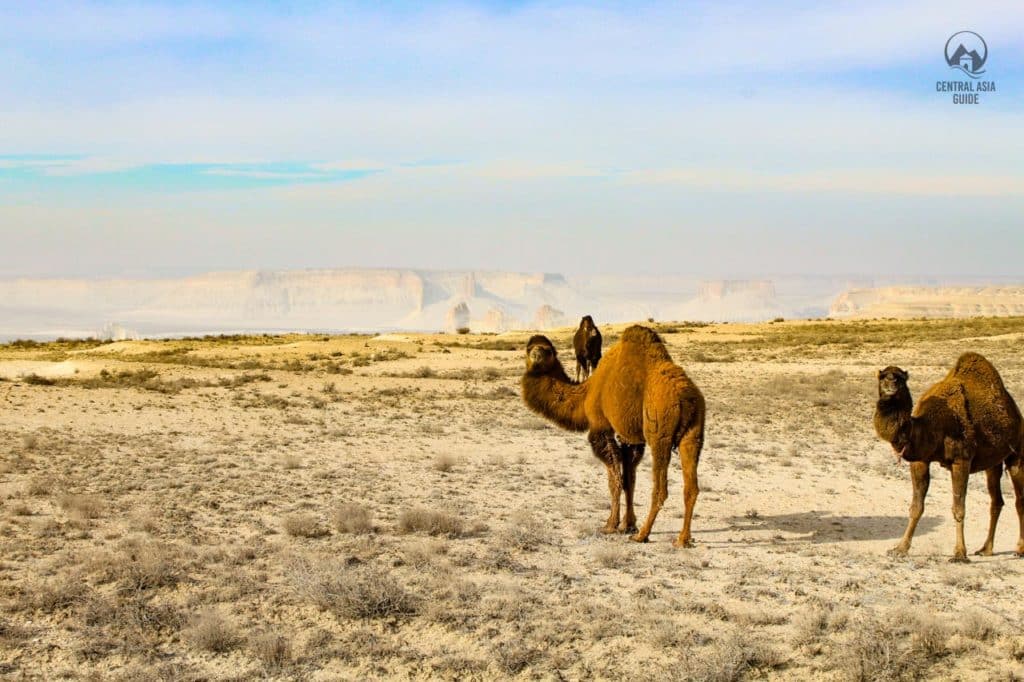Kazakh Camels
Camels of Kazakhstan
“Rich is the one who has a camel” used to be a popular proverb in Central Asia. Camels used to have an essential role in the life of nomads in different ways: as working animals (pack, harness, riding) and as a source of milk, meat, wool, and leather. Nowadays the use for transportation is insignificant and camels are now animals for mostly tourism with the exception of camel milk production being very much alive and even gaining popularity.
Camels are perfectly adapted to the semi-desert climate, so it is beneficial to breed them in the Kazakh steppes. Kazakhs have long considered the camel to be the most important animal whereas Kyrgyz value horses more. No physical force was ever used on these creatures as the camel is considered a sacred animal. They can stay without food for months and are able to wander and not drink for 40 days. Therefore, they are called “oysyl”, translated into tough or patient.
For thousands of years, the camels were the main working pack animals in the nomadic pastoralist household of Kazakh ancestors. Particularly in deserts, this animal with its qualities like patience for water, courage and strength, was the main helper of man. They carried the caravans with goods, cultivated the lands and even extracted the water.


Different breeds of Kazakh camels
Both one-humped and two-humped camels are bred in Kazakhstan. One humped is called “Nar”. The female Nar Kazkahs call “Maya” or “Aruana” and the male ones are called the “Ulek”. Nars are well adapted to hot climate, but they do not tolerate frosts which is a significant difference compared to their two-humped counterparts, the Bactrian camels. This species of camel is well adapted to living in a sharply continental dry climate with hot, dry summers and very frosty, snowy winters. A camel lives on average for 30-35 years. During their lifetime they gain up to 100 kilograms of fat that is collected in their humps.
A good camel is capable of producing up to 10 liters of milk per day and the milking season lasts 15 – 16 months after giving birth. The camel milk “Shubaat” is famous for its medicinal virtues, true or assumed. The nomads attribute these health effects to the milk composition linked to the desert plants on which free-roaming camels graze. Shubat is extremely popular and widely consumed and is even sold in Almaty and Astana supermarkets in cartons or plastic containers.


More about central Asian animals & Nature
Page updated 31.1.2021